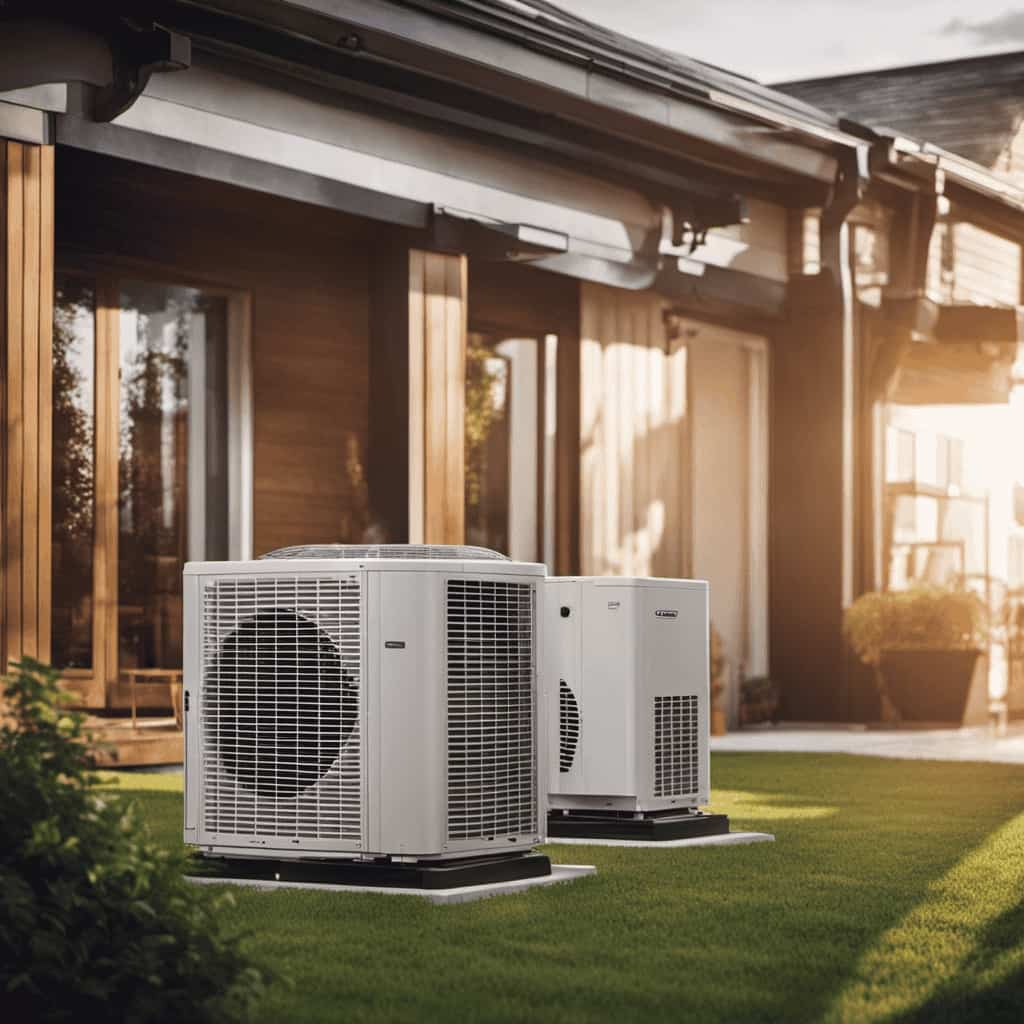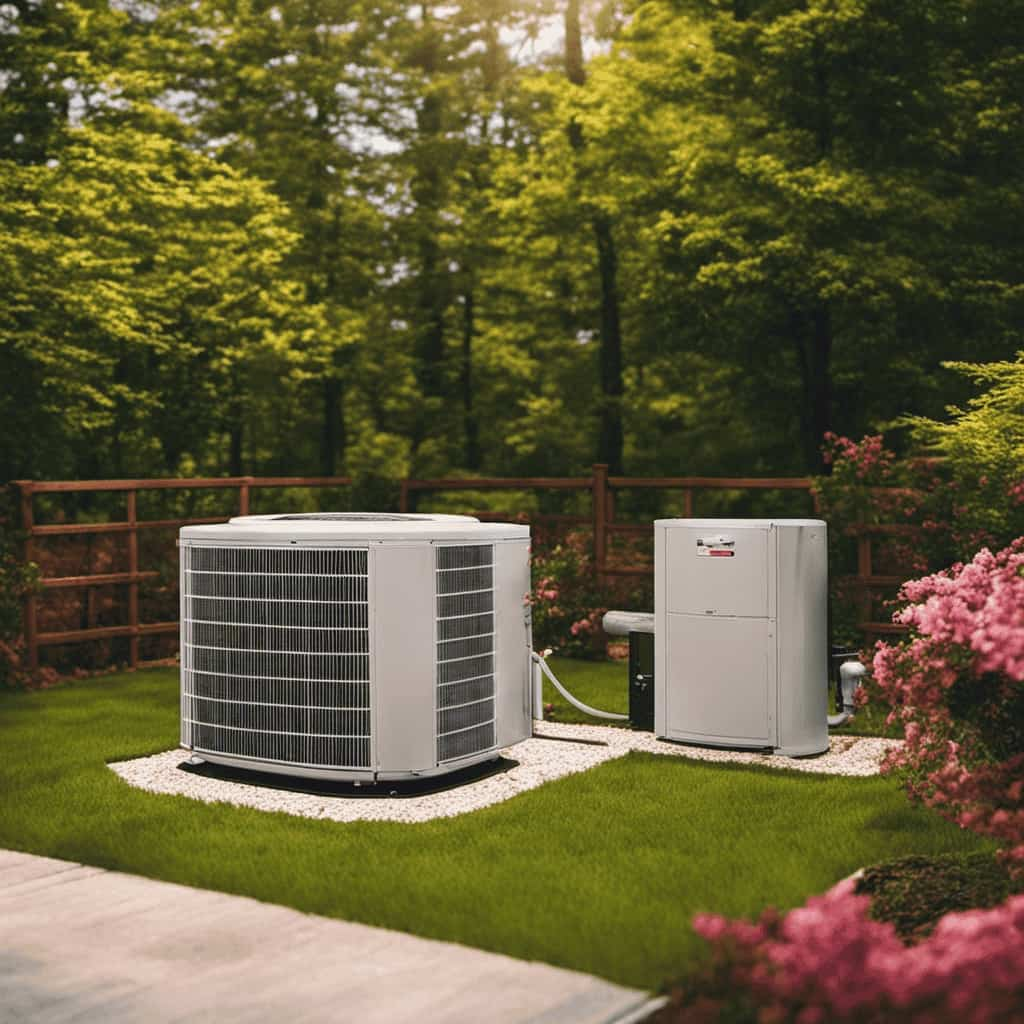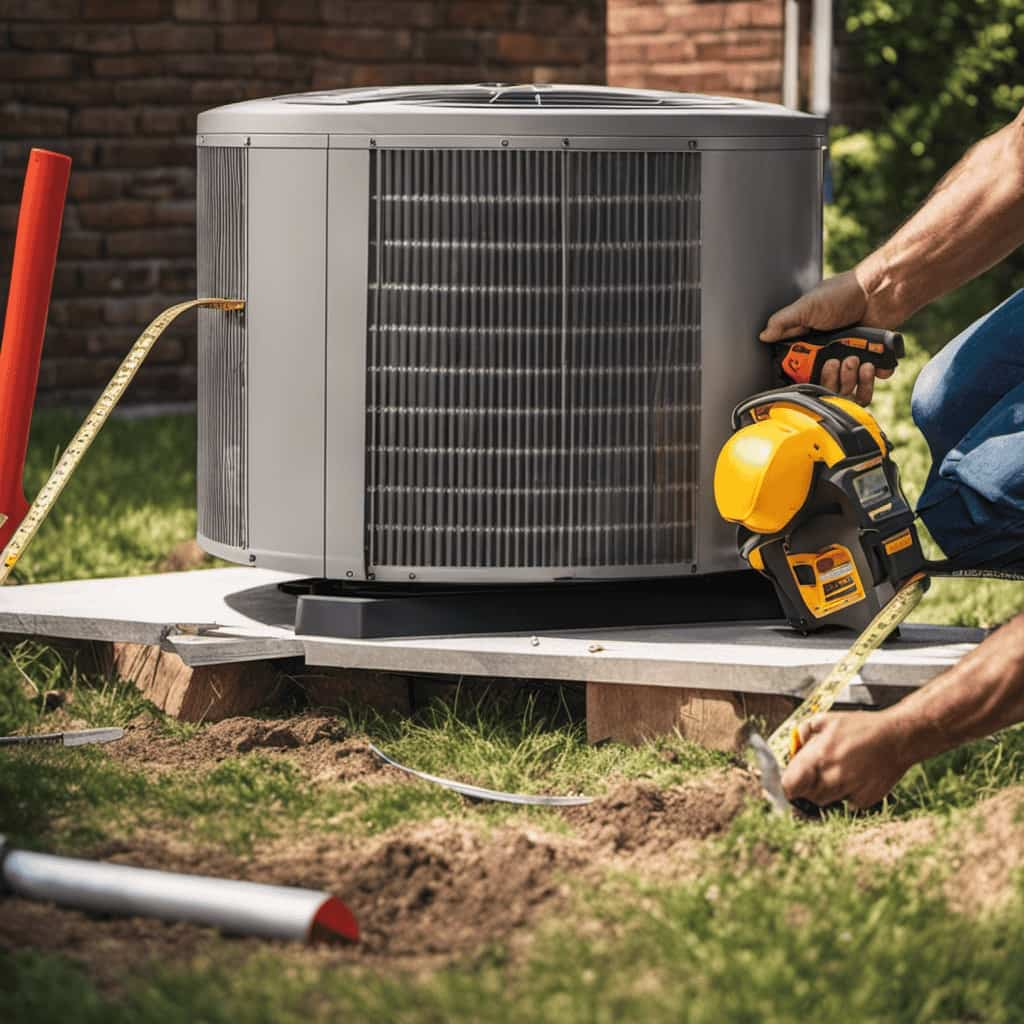
Have you thought about using the Earth’s natural warmth to heat our homes and reduce carbon emissions at the same time? This can be done with geothermal heat pumps!
In this article, we’ll simplify the complex world of geothermal heat pumps, explaining how they work, what components they consist of, and how they harness renewable energy.
Join us as we explore the benefits and applications of this innovative and intimate way to heat and cool our homes.
Key Takeaways
- Geothermal heat pumps harness the natural heat from the Earth to warm and cool homes efficiently and environmentally friendly.
- The key component of geothermal heat pump systems is the ground loop, which consists of buried pipes that circulate a mixture of water and antifreeze.
- Geothermal heat pumps utilize the heat stored in the earth for heating and cooling by transferring heat between the earth and homes through underground loops.
- Geothermal heat pump technology offers benefits such as energy efficiency, environmental friendliness, long lifespan, year-round comfort, and quiet operation.
The Basics of Geothermal Heat Pump Technology
Let’s explore the basics of geothermal heat pump technology.
Geothermal heat pumps are an incredible innovation that harnesses the natural heat from the Earth to warm and cool our homes. These systems work by transferring heat from the ground to our homes in the winter and removing heat from our homes and transferring it back to the ground in the summer.
The key component of a geothermal heat pump system is the ground loop, which consists of a series of pipes buried underground. These pipes circulate a mixture of water and antifreeze, absorbing and releasing heat as needed.
The heat pump then uses this heat to warm or cool the air in our homes. This technology isn’t only efficient and environmentally friendly but also provides long-term savings on energy bills.
Understanding the Components of a Geothermal Heat Pump System
To understand the components of a geothermal heat pump system, we need to examine the different parts that work together to transfer heat from the ground to our homes. Here are the key components:

-
Ground Loop: This is a system of pipes buried in the ground that circulate a refrigerant to absorb heat from the earth.
-
Heat Pump Unit: This is the heart of the system, which extracts heat from the ground loop and transfers it to your home.
-
Ductwork: This is the network of pipes that distribute the heated or cooled air throughout your home.
-
Heat Exchanger: This device allows the heat pump to transfer heat between the refrigerant and the air in your home.

-
Thermostat: This controls the temperature and settings of the heat pump system.
Understanding these components is crucial to grasping how geothermal heat pumps harness renewable energy.
How Geothermal Heat Pumps Harness Renewable Energy
Geothermal heat pumps harness renewable energy by utilizing the heat stored in the earth to provide heating and cooling for our homes. These innovative systems work by transferring heat between the earth and your home through a series of underground pipes called loops. The loops are filled with a water-based solution that circulates through the system, absorbing heat from the earth in the winter and releasing it in the summer.
To better understand how geothermal heat pumps work, let’s take a look at the following table:

| Ground Heat Exchanger | Heat Pump | Distribution System | |
|---|---|---|---|
| Role | Absorbs heat from the earth and transfers it to the heat pump | Concentrates and transfers the heat to the distribution system | Distributes the heated or cooled air throughout the home |
| Benefit | Provides a constant source of renewable energy | Efficiently converts the absorbed heat into usable energy | Delivers the desired temperature to each room |
The Benefits of Geothermal Heat Pump Technology
We can now explore the benefits of geothermal heat pump technology, as it offers numerous advantages over traditional heating and cooling systems.
-
Energy Efficiency: Geothermal heat pumps can provide up to 400% efficiency, meaning they produce more energy than they consume. This can result in significant cost savings on energy bills.
-
Environmental Friendliness: Geothermal systems use renewable energy from the earth, reducing greenhouse gas emissions and minimizing the carbon footprint.
-
Long Lifespan: Geothermal heat pumps typically last longer than traditional systems, with an average lifespan of 20-25 years for the heat pump and 50+ years for the underground loop.

-
Year-Round Comfort: Geothermal systems provide both heating and cooling capabilities, ensuring comfortable indoor temperatures throughout the year.
-
Quiet Operation: Geothermal heat pumps operate quietly, without the noise typically associated with traditional HVAC systems.
With these benefits, geothermal heat pump technology offers a sustainable and efficient solution for heating and cooling needs.
Exploring the Applications of Geothermal Heat Pump Systems
Let’s delve into the various applications for geothermal heat pump systems.

Geothermal heat pump technology has a wide range of applications, making it a versatile and efficient solution for heating and cooling needs.
One common application is residential homes, where geothermal heat pumps can provide both heating and cooling, resulting in energy savings and increased comfort.
Another application is commercial buildings, such as office spaces, schools, and hospitals.
Geothermal heat pumps can also be used for industrial purposes, such as heating and cooling large manufacturing plants and warehouses.

Additionally, geothermal heat pump systems can be installed in institutions like universities and government buildings.
With their ability to tap into the Earth’s natural heat, geothermal heat pump systems offer a sustainable and cost-effective solution for various applications.
Frequently Asked Questions
How Much Does a Geothermal Heat Pump System Cost to Install?
Installing a geothermal heat pump system can vary in cost depending on factors such as the size of the system and location. However, it typically ranges from $10,000 to $30,000, including installation and necessary equipment.
Are Geothermal Heat Pump Systems Noisy?
Yes, they are very quiet. We installed a geothermal heat pump system in our home and couldn’t believe how little noise it made. It’s like having a whispering friend keeping us comfortable.

Can a Geothermal Heat Pump System Be Installed in Any Type of Home?
Yes, a geothermal heat pump system can be installed in any type of home. It is a versatile technology that can be adapted to fit various heating and cooling needs, making it suitable for all types of households.
How Long Does It Take to Recoup the Initial Cost of a Geothermal Heat Pump System Through Energy Savings?
We’ll recoup the initial cost of a geothermal heat pump system through energy savings in a reasonable amount of time. It’s an investment that pays off, making our home more efficient and comfortable.
What Maintenance Is Required for a Geothermal Heat Pump System?
We don’t have to worry about much maintenance for our geothermal heat pump system. Regular filter changes and occasional check-ups are all it takes to keep it running smoothly and efficiently.
Conclusion
In conclusion, geothermal heat pump technology offers a simplified and efficient way to harness renewable energy. By utilizing the Earth’s natural heat, these systems provide numerous benefits, such as reduced energy consumption and lower utility costs.

With its wide range of applications, from heating and cooling homes to providing hot water, geothermal heat pumps are a smart and eco-friendly choice.
Embrace the power of geothermal technology and make a positive impact on the environment while enjoying comfort and savings.









